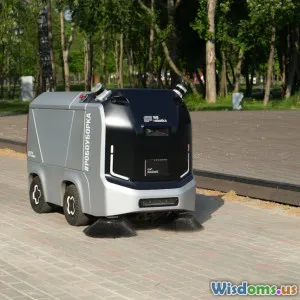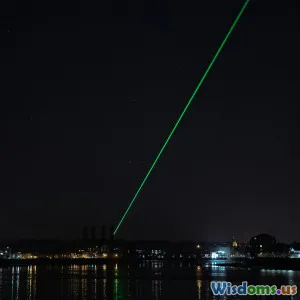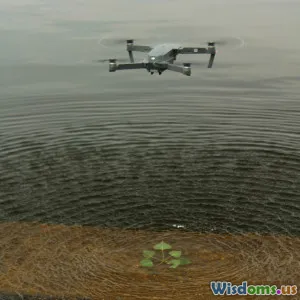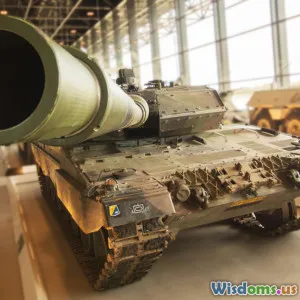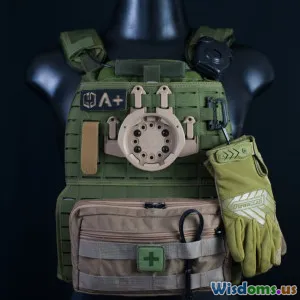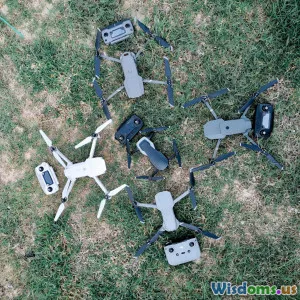
Unmanned Systems in Modern Conflicts
6 min read Explore the role of unmanned systems in contemporary warfare, highlighting innovations, applications, and future implications. (0 Reviews)
Unmanned Systems in Modern Conflicts
Introduction
The landscape of warfare is continually evolving, and one of the most significant changes in recent decades has been the rise of unmanned systems. These technologies, which include drones, unmanned ground vehicles, and autonomous naval vessels, are reshaping the way military operations are conducted. This article explores the various applications of unmanned systems in modern conflicts, their technological advancements, ethical considerations, and future implications.
The Rise of Unmanned Systems
Unmanned systems have gained prominence mainly due to their ability to perform missions in environments that are too dangerous for human soldiers. The adoption of drone technology began in earnest during the early 2000s, with the U.S. military using them for reconnaissance and targeted strikes in conflict zones like Afghanistan and Iraq. Today, these systems are not only used for surveillance but also for combat, logistics, and even humanitarian assistance.
Types of Unmanned Systems
-
Unmanned Aerial Vehicles (UAVs): Also known as drones, UAVs are perhaps the most well-known unmanned systems. They have been employed for intelligence gathering, airstrikes, and surveillance. The MQ-9 Reaper drone, for instance, can conduct both reconnaissance and precision strikes.
-
Unmanned Ground Vehicles (UGVs): These include robots designed for land operations, such as bomb disposal, reconnaissance, and supply transport. The U.S. Army's Tactical Autonomous Combatant (TAC) is a prime example, designed to support troops in various ground operations.
-
Unmanned Underwater Vehicles (UUVs): These systems are used for naval operations, including mine detection and underwater surveillance. The U.S. Navy employs UUVs like the Bluefin-21 for various missions.
-
Autonomous Systems: These systems can operate independently or semi-autonomously, utilizing artificial intelligence to make decisions without human intervention. Their development is accelerating, with prototypes being tested for various applications in combat scenarios.
Technological Advancements
The evolution of unmanned systems has been fueled by rapid advancements in technology, particularly in artificial intelligence, machine learning, and robotics. These innovations enable unmanned systems to:
- Improve Decision-Making: AI algorithms analyze data from various sources, allowing unmanned systems to make informed decisions quickly.
- Enhance Communication: Advanced communication systems ensure that unmanned systems remain connected with command units, providing real-time data and situational awareness.
- Increase Autonomy: The development of autonomous systems is reducing the need for human operators, allowing for missions that require minimal human intervention.
Ethical Considerations
While unmanned systems offer significant advantages in modern warfare, they also raise ethical concerns. The use of drones for targeted killings, for example, has sparked debates over accountability, civilian casualties, and the implications of remote warfare. The potential for autonomous weapons to make life-and-death decisions without human oversight poses additional moral dilemmas. Addressing these concerns is critical for the responsible development and deployment of unmanned technologies.
Future Implications
The future of unmanned systems in military conflicts is likely to be characterized by increasing integration with manned systems and enhanced autonomy. As nations continue to develop these technologies, key trends to watch include:
- Integration with Cyber Warfare: Unmanned systems will increasingly be used in conjunction with cyber operations to enhance operational effectiveness.
- Collaborative Operations: Future conflicts may see swarms of drones working together autonomously to execute complex missions, reducing risks to human soldiers.
- Regulatory Developments: As unmanned systems proliferate, international regulations governing their use will become essential to prevent misuse and ensure accountability.
Conclusion
Unmanned systems are undoubtedly transforming modern conflicts, providing military forces with new capabilities and strategies. As technology continues to advance, the role of these systems in warfare will expand, bringing both opportunities and challenges. It is essential for military leaders, policymakers, and society as a whole to engage in discussions about the ethical implications and regulatory frameworks surrounding unmanned technologies to ensure they are used responsibly and effectively.
In summary, unmanned systems represent a pivotal shift in military strategy, and understanding their capabilities, challenges, and future potential is vital in navigating the complexities of modern warfare.
Rate the Post
User Reviews
Popular Posts













